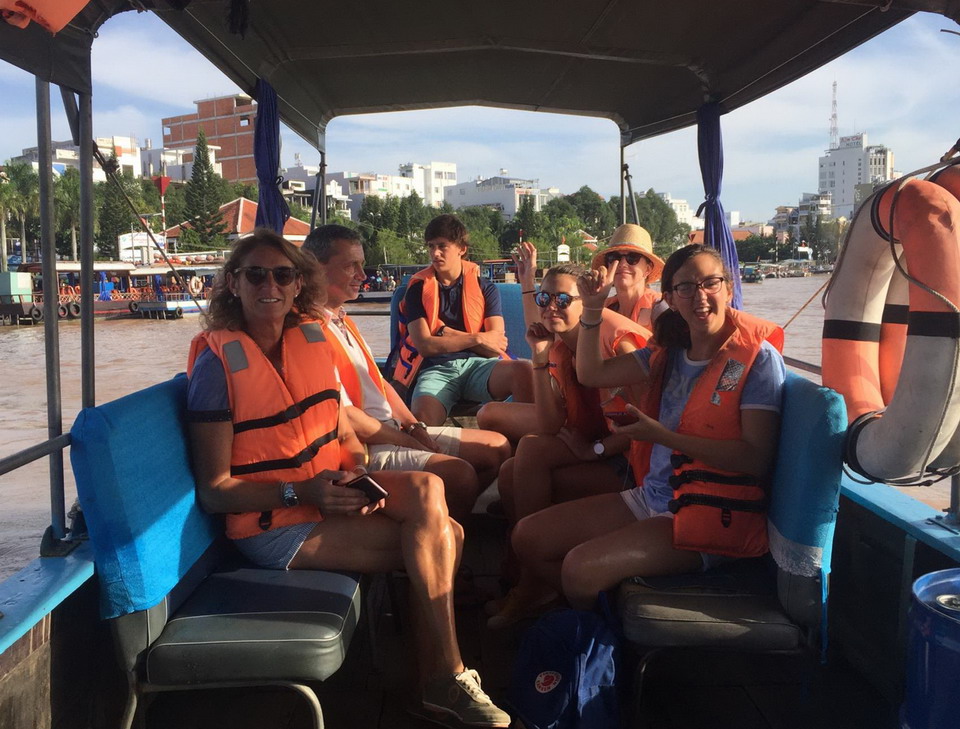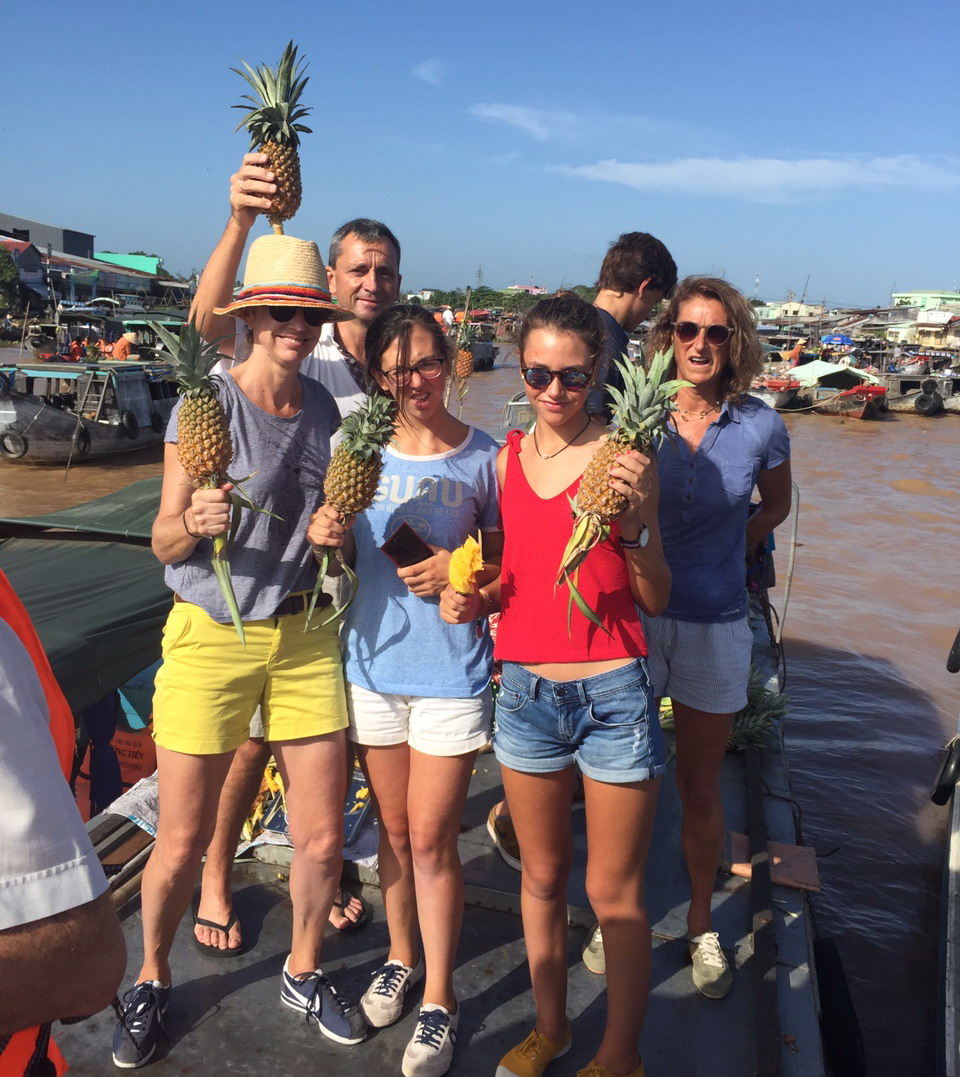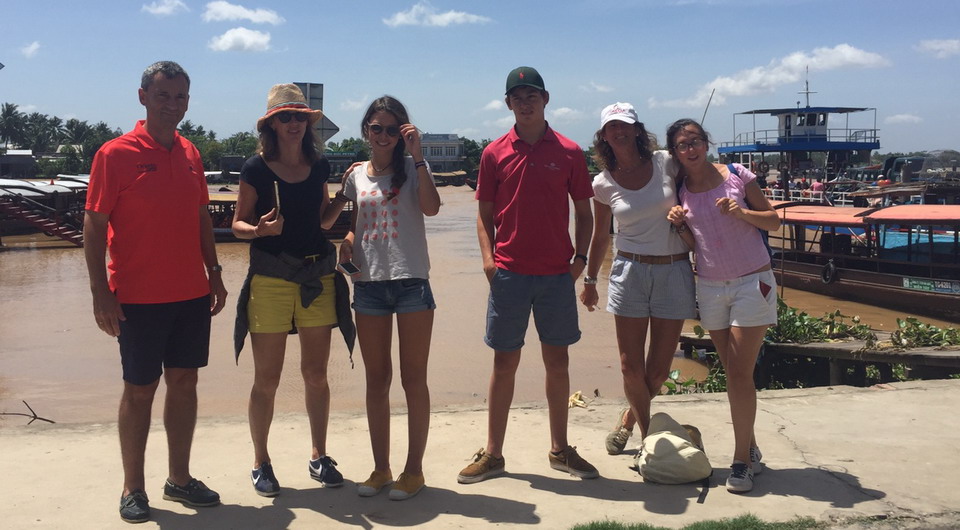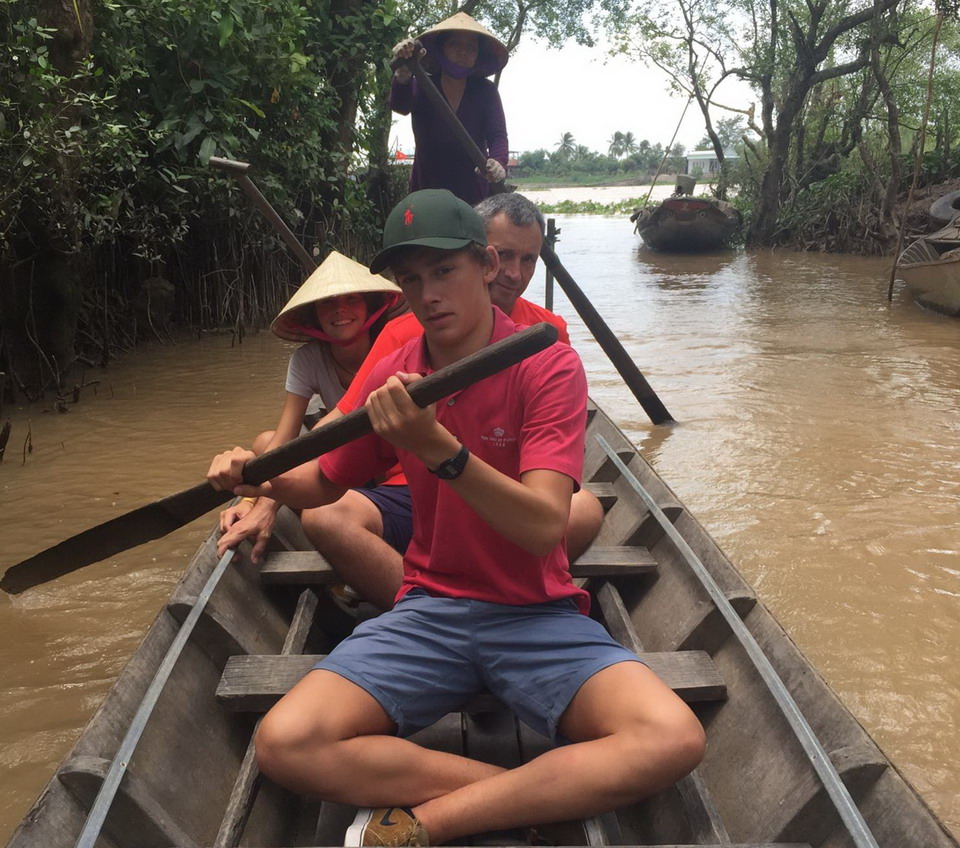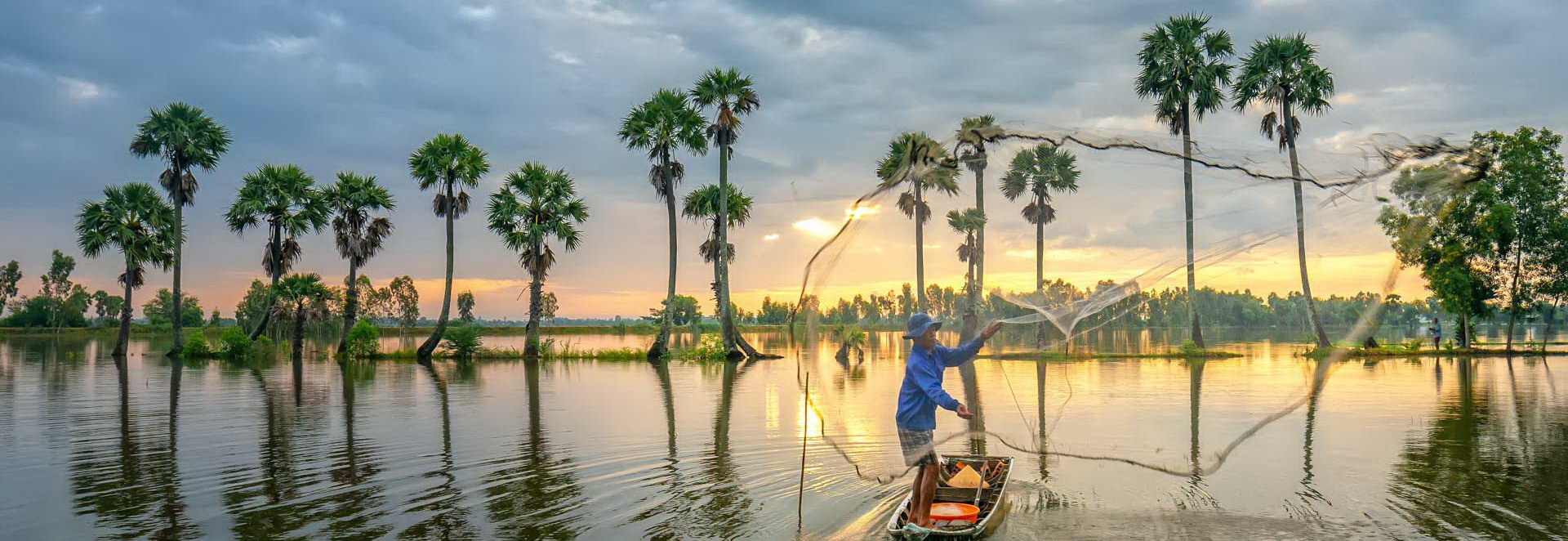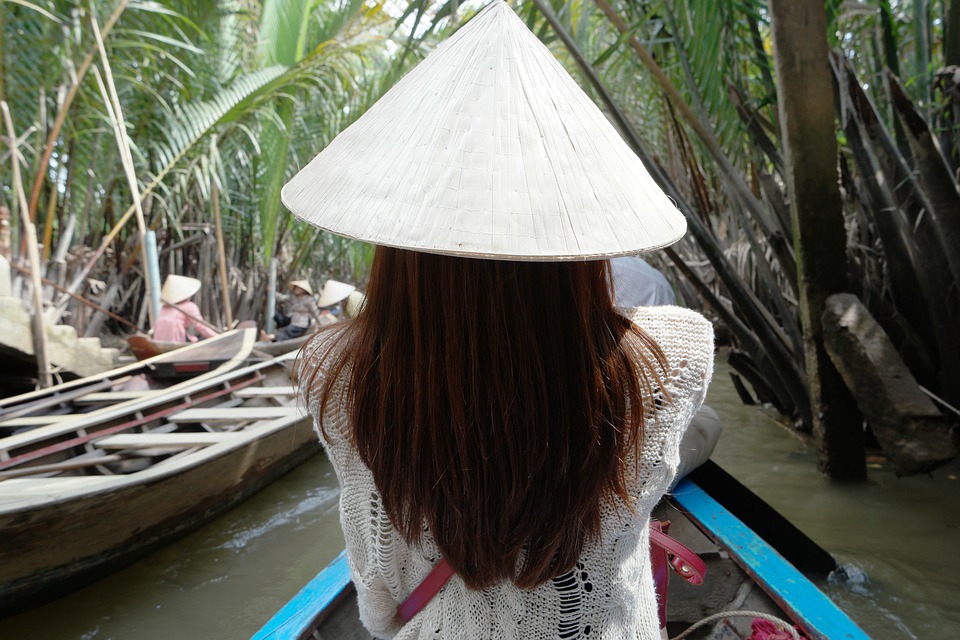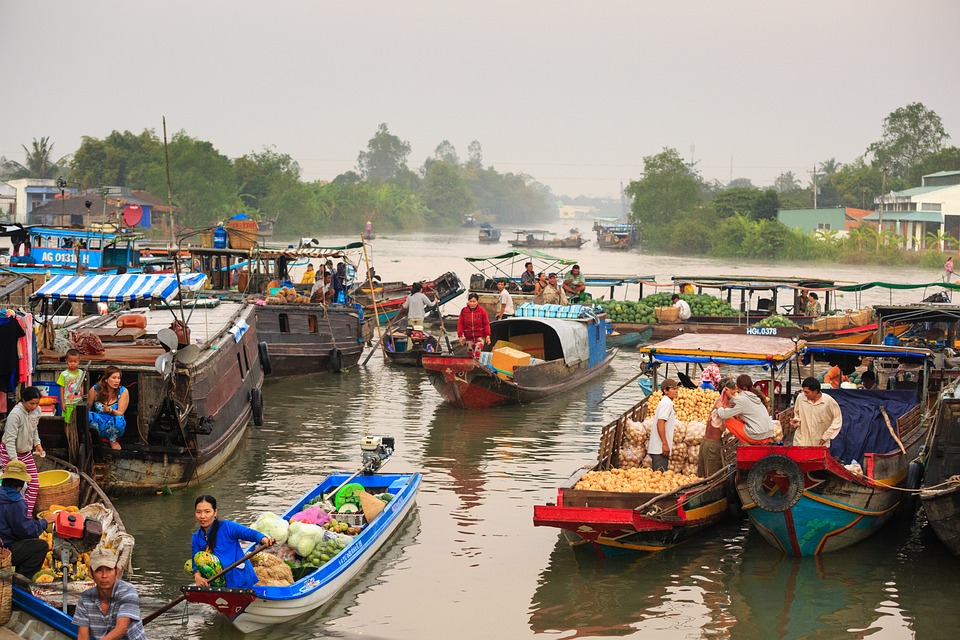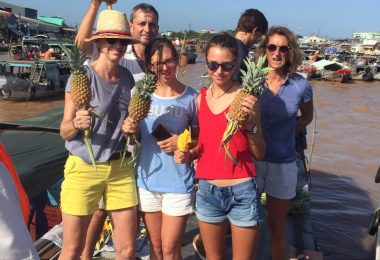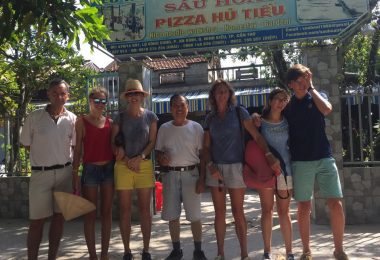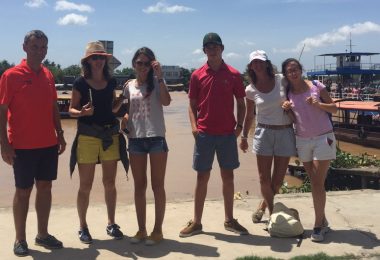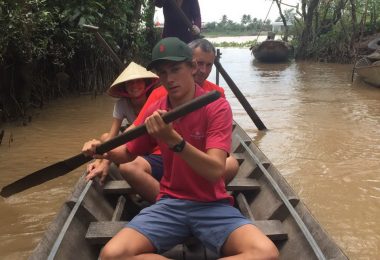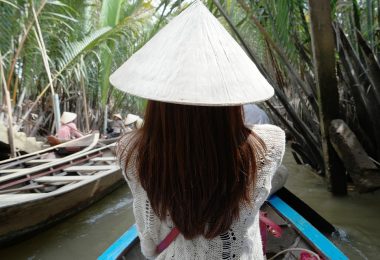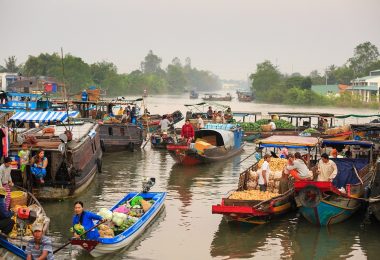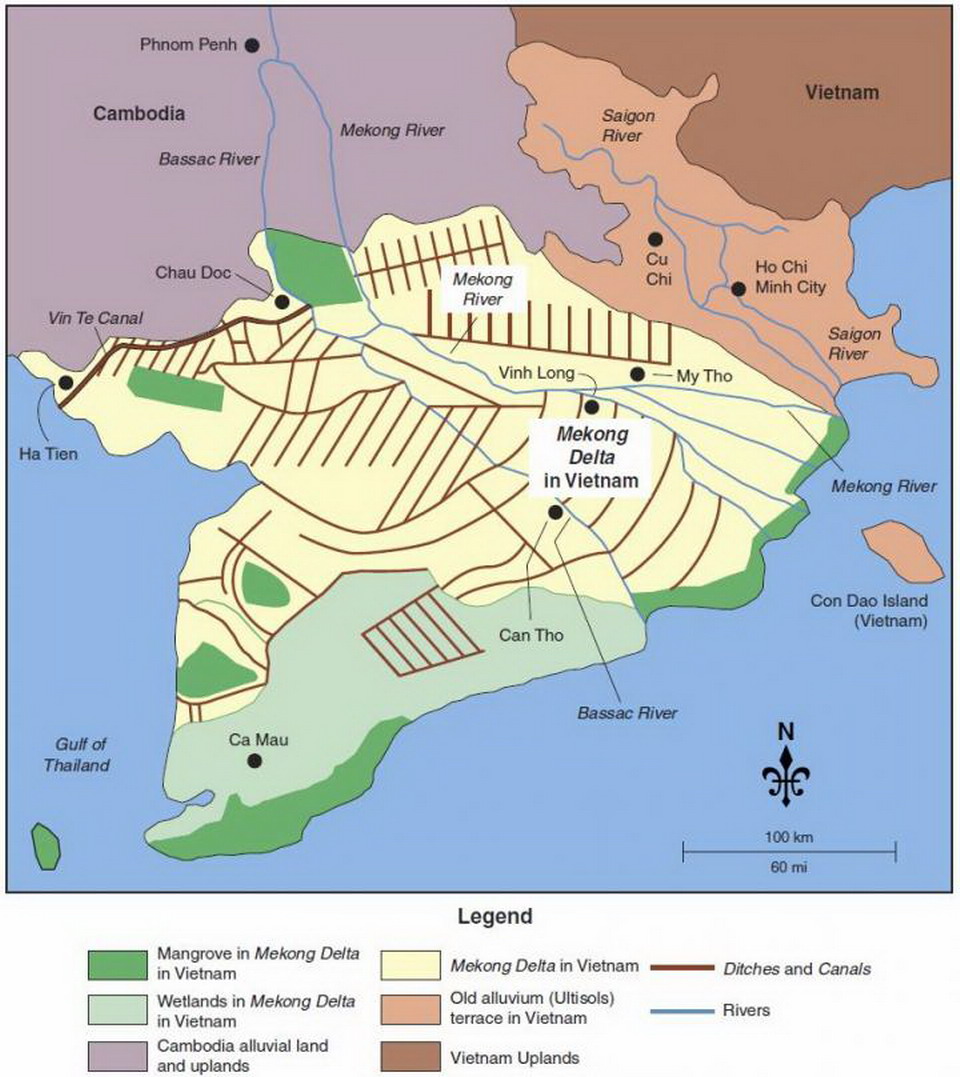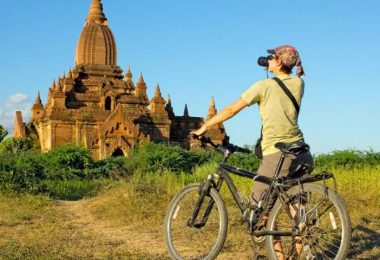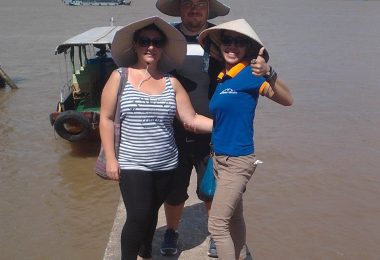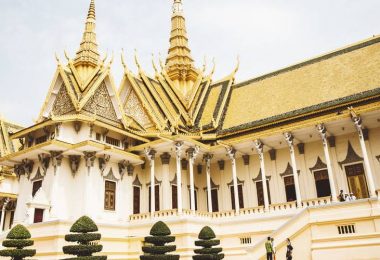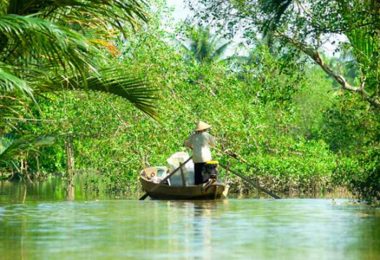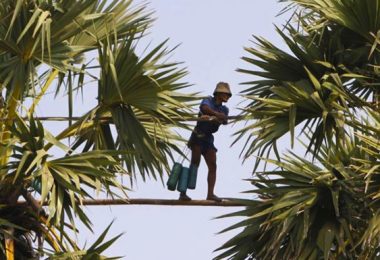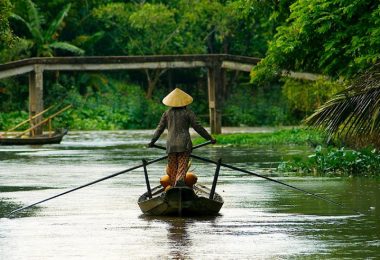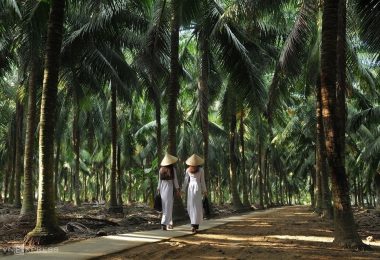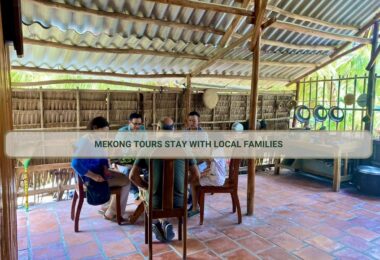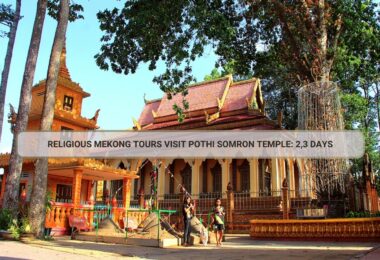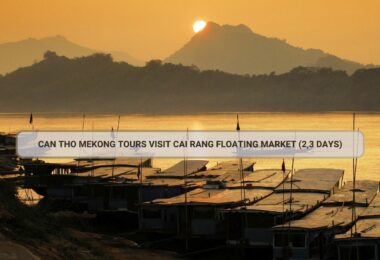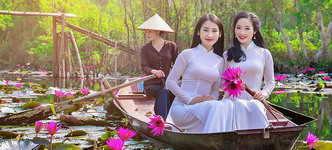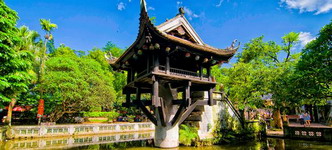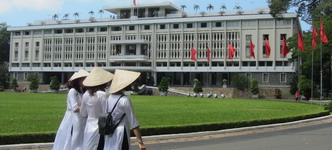Tucked right into this verdant area lies the fine town of Chau Doc, which is housing the culturally significant Kherme Village. If one wants to get a different cultural experience and get very close to the same, then a tour to visit Kherme Village in Chau Doc is a must! On this tour, get acquainted with or discover some of the sustainability-driven, ancient livelihoods of the Khmer, their history, and, of course, bear witness to the intricate process of making palm sugar from the majestic Palmyra palm. Ready to dive into the heart of the Mekong? Let’s begin
Visiting Kherme Village in Chau Doc
Situated in Chau Lang Commune, Tri Ton District, An Giang Province is Kherme Village. Getting to Kherme Village in Chau Doc itself is a big adventure. Here is explained how to get there easily:
By Bus
- From Ho Chi Minh City: Take one from Mien Tay Bus Station; companies such as Phuong Trang, better known by the name Futa Bus, and Mai Linh have daily services operating.
- Duration: 6-7 hours
- Cost: 150,000 – 200,000 VND ($7-$9 USD)
By Private Car
- From Ho Chi Minh City: Take a private car for more comfort
- Route: National Highway 1A to National Highway 91 via Can Tho
- Cost: 1,500,000 – 2,500,000 VND ($65-$110 USD)
By Boat
- From Can Tho: Getting a boat from Ninh Kieu Wharf to Chau Doc.
- Duration: 5 hours
- Cost: 500,000 – 700,000 VND ($22-$30 USD)
Local Transportation to Kherme Village
- Taxi: Available at the bus and boat stations. Cost approximately: 200 000 – 300 000 VND (9-13 USD)
- Motorbike: Rent for around 100,000 – 150,000 VND ($4-USD 6) per day.
- Bicycle: Rent for about 50,000 VND (USD 2) per day.
Best Time to Visit: November to May (dry season).
In such a case, the options by which one can travel to Kherme Village in Chau Doc are just too many, all fun-filled and quite easy. Have fun and experience the rich Khmer culture!
Overview of Kherme Village
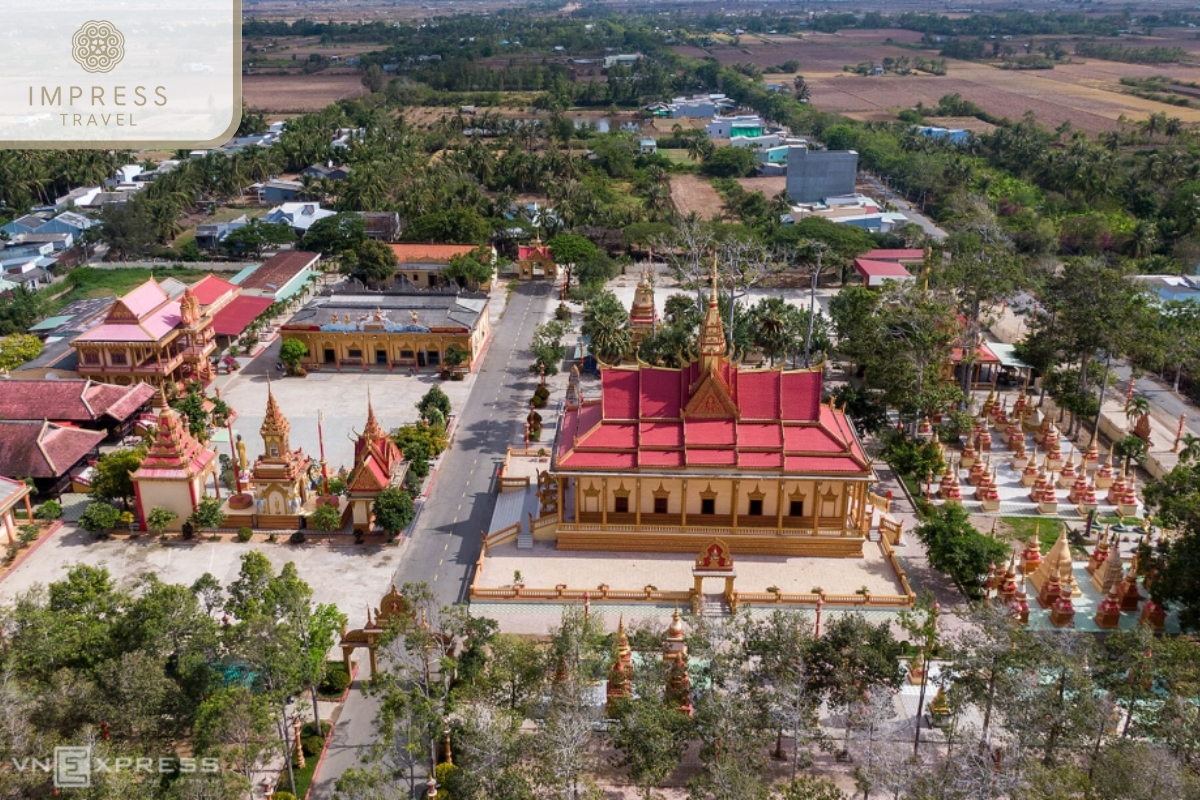
Kherme Village
Kherme Village, centrally positioned in the Mekong Delta, exposes its centuries-long history. This village is majorly inhabited by Khmer People, who have well conserved their unique traditions and way of life despite changes in time. The people here are very hospitable, with intricate cultural practices defining them.
The Khmer people have a proud tradition in their rich crafts of making palm sugar within the Palmyra palm. This isn’t simply a livelihood; rather, it is an honored tradition passed through generations.
This village, with its history, has strongly cooperated with the formation process of the Mekong Delta and is an integral part of the cultural tapestry of this area. During this tour to visit Kherme Village in Chau Doc, you will have the chance to gain a deeper understanding of the historical journey of the Khmer as well as their contribution to this land. You can walk around to admire their nice traditional houses, ancient temples, and bustling local markets.
Forming the Sugar
After several hours of cooking, the saps thicken into a thick golden syrup. This is then poured onto molds to cool down and harden. Outcome blocks of palm sugar, each one an unspoken monument to the dedication and work ethic of those craftsmen. The blocks are grated or broken into chunks for cooking and baking.
The Palmyra Palm Sugar Craft of tour to visit Kherme Village in Chau Doc
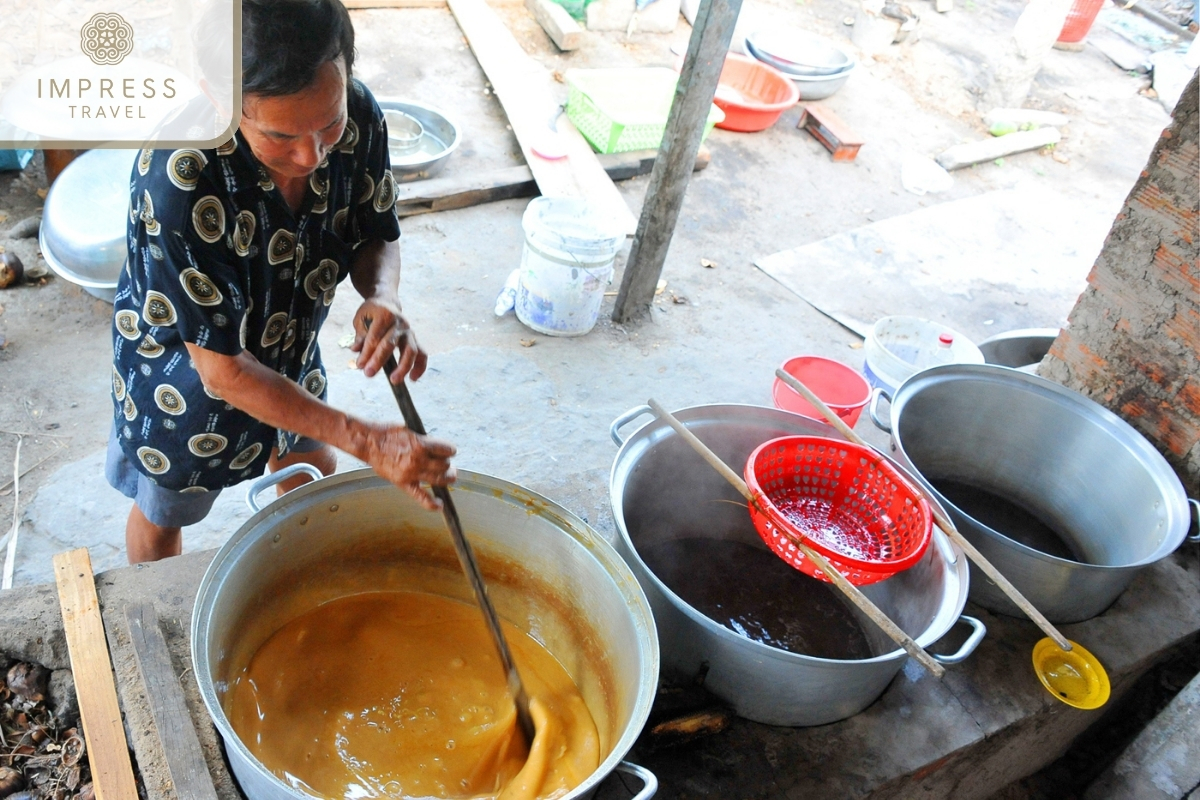
make Palmyra palm sugar
En route to your tour to visit Kherme Village in Chau Doc, experience the culture of the Khmer. Visit the traditional making of palm sugar resistance—the type that is a culinary delicacy, an indulgence in many beautiful hands, loving care, and urgency skill
The Importance of the Palmyra Palm
The Palmyra palm is a tall tree and symbolizes life, and nourishment for the Khmer people. It is called “thốt nốt" in Vietnamese. These trees are fine but above all very useful. On them, juice is used by the Khmer to produce palm sugar, an integral component of their cuisine and one of the principal products for their sale.
Selecting the Palmyra Palms
Processing palm sugar is the journey from tree to table. The process initiates with the careful selection of the Palmyra palm trees in their natural habitat, among rivers and streams. These trees, with their characteristic fan-shaped leaves and comfortably stout trunks, are tapped for their sweet liquor. This demands immense skill and precision since the tree-tapping process or collecting its sap should not be harmful.
Collecting the Sap
Imagine ascending these grand trees at dawn with the traditional bamboo ladders. Experienced and agile sap collectors head up to the top, and gash a small cut into the flower stalk, allowing the sap to flow out into a container that has been tied to it. Collected, it is brought down to filter out any impurities.
Cooking the Sap
Next, the sap is poured into large pots and cooked on an open flame. This section of the process needs vigilance at all moments. Not only is the sap stirred continuously to avoid burning it but also to make sure that it thickens evenly. Cooking sap gives off the sweet, inviting aroma of maple syrup.
Forming the Sugar
After several hours of cooking, the saps thicken into a thick golden syrup. This is then poured onto molds to cool down and harden. Outcome blocks of palm sugar, each one an unspoken monument to the dedication and work ethic of those craftsmen. The blocks are grated or broken into chunks for cooking and baking. can be grated or broken into smaller pieces for use in cooking and baking.
Experience Palmyra palm sugar production on a tour to Kherme Village in Chau Do
Well, on your tour to visit Kherme Village, Chau Doc, you will get to have a firsthand look at the palm sugar production process. So this is much more than just having a view; it is being involved and getting to understand the labor and skills that go into this traditional craft.
Step 1: Preparing the Tools and Materials
Before the sun is up, every villager has prepared his or her tools for the day’s job: bamboo ladders, sharp knives, sturdy containers. Everything is checked and rechecked to be certain all will go well and safely.
Step 2: Collecting the Sap from the Palmyra Palm
In the early morning hours, the sap gathers and climbs onto tall Palmyra palms. Bamboo ladders are used for this purpose, light in weight yet stronger than any other. At the top, a precise cut is made on the flower stalk, and a container to collect the sap is attached. The practice is repeated on many trees, quite physically demanding yet rewarding.
Step 3: Cooking and Refining the Sap into Sugar r
The collected sap is then taken back to the village, filtered, and then poured into large pots for cooking over an open fire. It is cooked and stirred continually. This part of the process is very important because this determines how good the syrup will turn out to be. Therefore, stirring of the sap by turns at night is done, knowing that one should avoid burning and thickening to the right consistency.
Step 4: Forming and Packaging the Final Product
Once the sap has thickened, it is poured into molds and left to cool and harden. The villagers use several shapes of molds, starting from the traditional rounds to recent modern designs in various shapes. Upon cooling, the sugar is removed from the molds to create beautiful round blocks of golden palm sugar. These blocks were then packed into blocks ready to sell or use in cooking.
Cultural Immersion in Kherme Village
Traditional Khmer Lifestyle and Daily Activities
Strolling around Kherme Village gives one an insight into the simple, yet rich lives of these Khmer people. There existed a peace in the way they lived, which did not separate them as individual beings from the relationship with natures and practices passed down from their ancestors. The morning started with all activities: men went off to the fields, women prepared food, and some children went to school while other small ones assisted their parents at home.
You will find admirably constructed stilt houses, designed to be able to make a stand against the floods of the Mekong Delta. Each house speaks its story, brightened by traditional decorations, usually together with a lush garden. It would also be where one finds a close-knit group: neighbors sharing their stories and food in a friendly atmosphere and laughter
Local Customs, Festivals, and Rituals
The calendar is packed with varied festivals and rituals that are predicted to be spent by the Khmer people. One of the most prominent is the Chol Chnam Thmay. The village is dressed up during celebrations with vibrant decorations, traditional music, dance performances, and sumptuous feasts.
Another important festival is the Pchum Ben, which is a series of ceremonies and offerings done as homage to ancestors at one’s local pagoda. You will be able to join in such cultural festivities in parts for an even greater view and understanding of the spiritual world of the Khmer during your tour to visit Kherme Village in Chau Doc.
Opportunities for Tourists to Engage with the Community
You aren’t just visiting Kherme Village; you are joining them. They welcome visitors so much that they allow tourists to join in the various traditions along with them. You will be invited to help in the preparation of a meal, try your hand at some traditional craft, or maybe learn a few words in Khmer.
Rather frequent are the workshops or interactive sessions on making souvenirs, like baskets woven from palm leaves or palm leaf hat-making. Practical workshops provide one not only the fun of touching and concentrating on things with their own hands but also give a peek into the dexterity and creativity of the Khmer
Learning about Khmer Cuisine and Traditional Dishes
Food plays a central role in Khmer culture, so your tour to visit Kherme Village in Chau Doc provides an excellent culinary exploration into classic Khmer dishes, such as amok, an aromatic curry of either fish or chicken and bai sach chrouk, grilled pork with rice.
Markets are a feast for the senses: fresh produce, spices, and snacks galore—you may even cook alongside local chefs and learn how to prepare dishes with age-long recipes kept within generations.
Other Attractions in and Around Chau Doc
While Kherme Village is an attraction, Chau Doc and its environs have much more to offer for your Mekong Tours.
Overview of Other Notable Sites in Chau Doc
- Sam Mountain: A spiritual site with a panoramic view of the Mekong Delta. The mountain is home to several temples and pagodas, one of which is the Ba Chua Xu Temple, very famous throughout history.
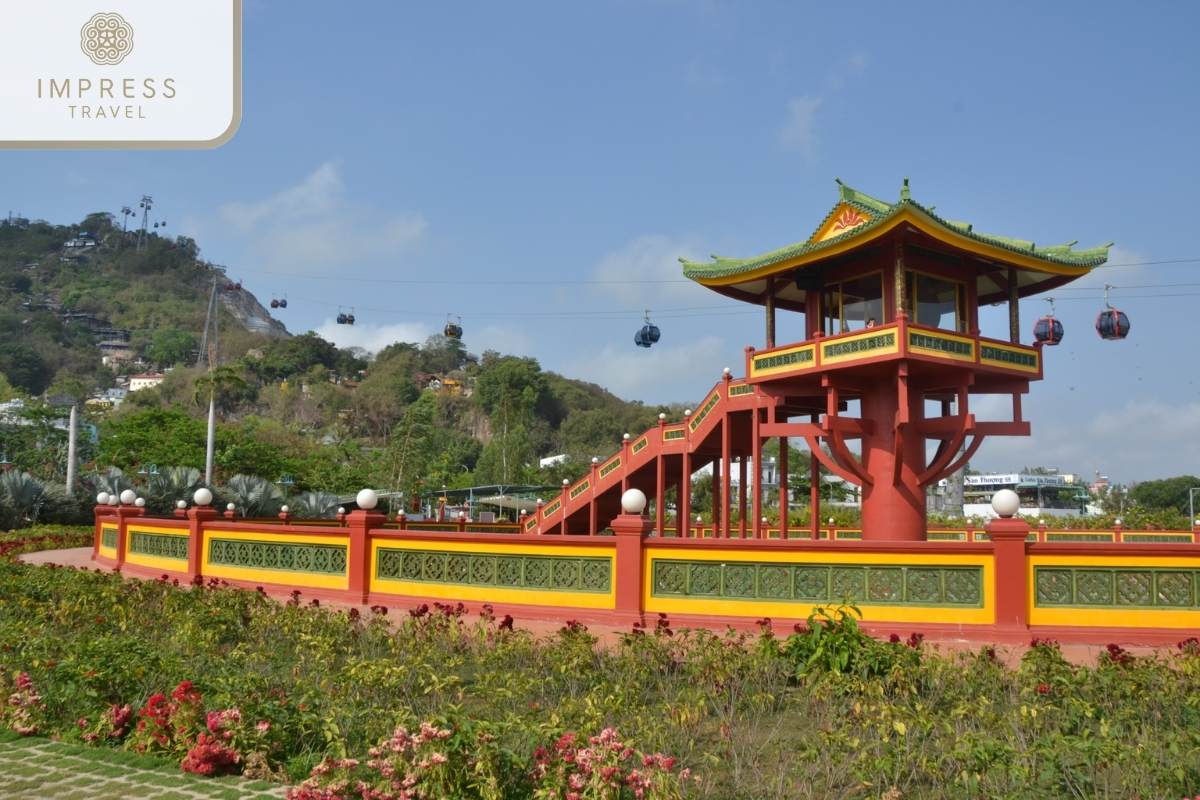
Sam Mountain
- Chau Doc Floating Market: Be witness to the activities and dynamism of business conducted on the river, where vendors sell all types of fruits and vegetables and even other goods right from the boats.
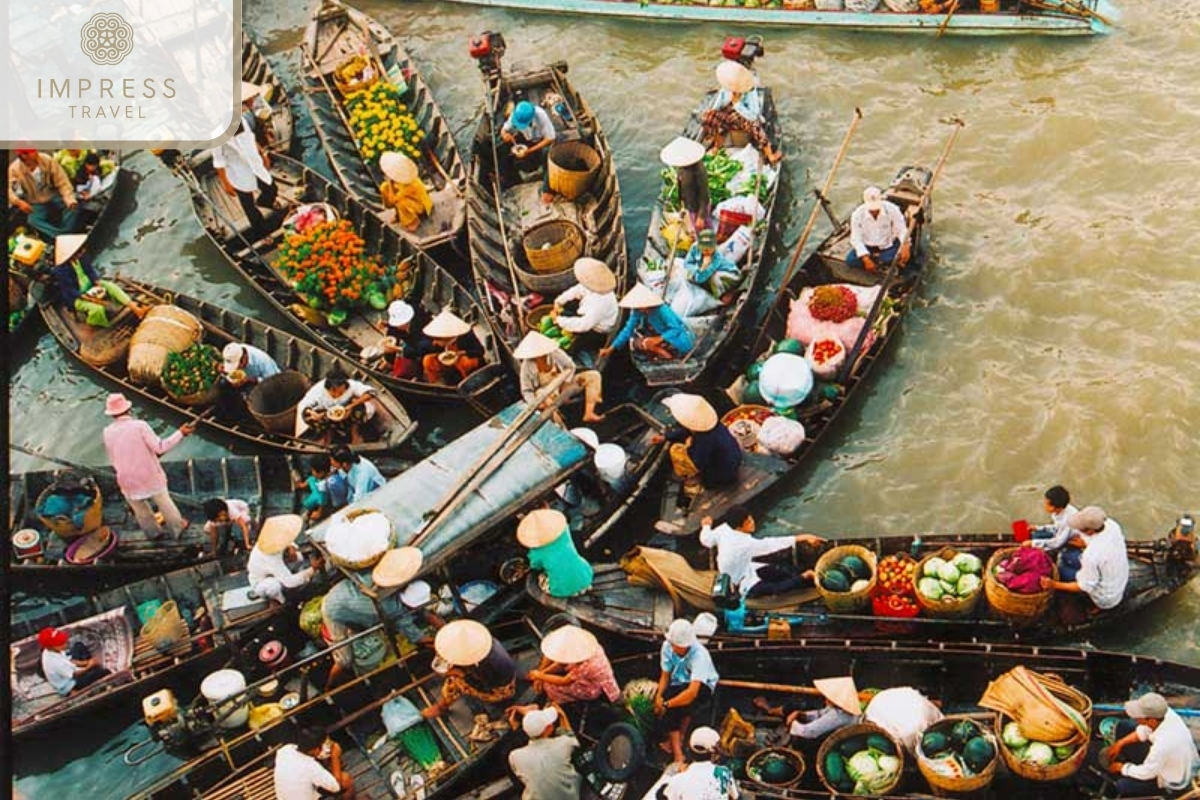
Chau Doc Floating Market
- Tra Su Cajuput Forest: is such a serene forest, full of biodiversity, as one gets to see different wildlife in the boat ride through the lush mangrove forests.
Tips for Making the Most of Your Visit to Chau Doc
- Timing: The dry season, from November to May, has the best weather and is suitable for palm sugar production.
- Transportation: Rent bicycles or motorbikes and enjoy going around the area in your own time.
- Engage Locally: Take time to chat with locals, participate in activities, and try traditional foods.
Practical Information for Tourists in tour to visit Kherme Village in Chau Doc
This will help ensure that you have a smooth and enjoyable tour of Kherme Village in Chau Doc; some practical information is hereby provided for your good
Accommodation Options in Chau Doc and Nearby Areas

Victoria Chau Doc Hote
- Victoria Chau Doc Hotel: It faces the river, with modern amenities
- Murray Guesthouse: It is an affordable home
- Floating Hotels: One can stay in one of the floating hotels on the river for a different experience
Local Restaurants and Food Recommendations
- Bay Bong: famous for fish noodle soup.
- Truong Van: Offers a wide array of traditional Vietnamese and Khmer dishes.
- Chau Doc Night Market: is good for street food and local snacks
Safety Tips and Cultural Etiquette
- Respect Local Customs: Dress modestly, particularly when entering temples or any other places of worship.
- Stay Hydrated: It may get hot, so drink lots of water.
- Cultural Sensitivity: Have courtesy and patience; many will not speak English
Essential Travel Information
- Currency: VND(Vietnamese dong)
- Languages: Vietnamese and Khmer
- Health Tips: Vaccinations against Hepatitis A and Typhoid may be considered; Avoid insect bites by using repellent
Conclusion
Having an access tour to visit Kherme Village in Chau Doc, promises you a unique blend of cultural immersion, historical insight, and delightful experiences. This is not only the discovery of one of the beautiful areas of the Mekong Delta but also involves cooperation and support for the local populace and affluent culture evidenced among them.
Bring your sense of curiosity and luggage, and you are ready to embark on the ride of a lifetime. It awaits you with the hospitality of the Khmer race, the sweetness of Kherme Village, and the beauty of Chau Doc. Happy travels on your Mekong Tours adventure! Don’t forget to regularly follow our IMPRESS TRAVEL for more interesting information about traveling Mekong to and to book Mekong Tours at the best prices {Useful link – https://impresstravel.com/mekong-tours/}



































